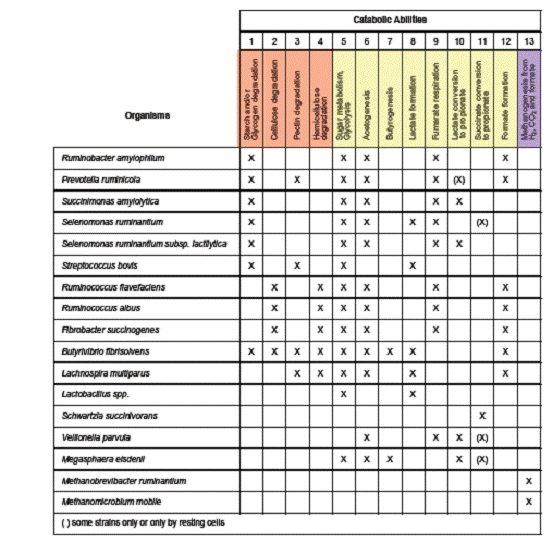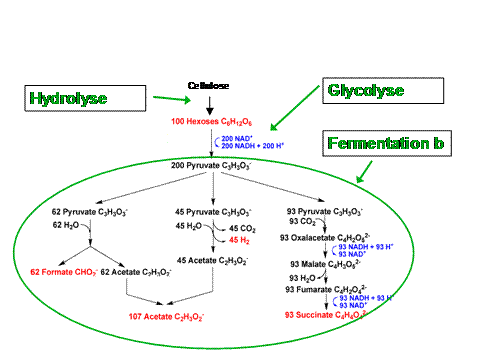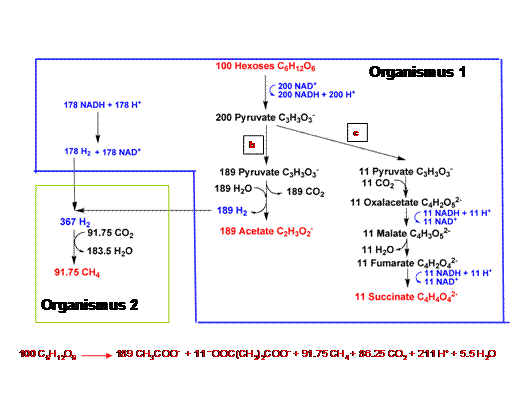
Diagram 1: Selected catabolic abilities of some bacteria and archaea of the rumen microbiota

Diagram 2: Metabolism of Ruminococcus flavefaciens in single culture

Cellulose Q1: dQ1/dt = -k1*Q1
Glucose Q2: dQ2/dt = s1*k1*Q1 – k2*Q2 = 100*k1*Q1 – k2*Q2 (s1=100
ist willkürlich von mir gesetzt)
Pyruvat Q3: dQ3/dt = s2 *k2*Q2 – k3*Q3 = 2*k2*Q2 – k3*Q3
Formiat dQ4/dt = a* dQ3/dt; a= s3/200
Acetat dQ5/dt = a* dQ3/dt + b* dQ3/dt; b= s4/200
Succinat dQ6/dt = c*dQ3/dt = dQ3/dt – dQ4/dt – dQ5/dt = dQ3/dt – a*
dQ3/dt – b* dQ3/dt;
c=1-a-b
dATP/dt: dQ7/dt = 2 * k2*Q2 + b * dQ3/dt
dH2/ dt : dQ8/dt = b* dQ3/dt + (k3*Q3 - 2* dQ6/dt)
dNADH/dt: dQ9/dt = 2*k2*Q2 - 2(dQ3/dt – a* dQ3/dt – b* dQ3/dt)
Subroutine
Bacteria growth:
dN/dt = μ * N
Growth rate: μ ~ qs, YATP
μ = qs *YATP
Substrate dependant metabolic rate:
qs = qmax S/(Ks + S);
Diagram 3: Syntrophism: Ruminococcus flavefaciens & Methanobrevibacter ruminantium

Formiat dQ4/dt = a* dQ3/dt; a= s3/200; s3= 0
Acetat dQ5/dt = b* dQ3/dt; b= s4/200 s3= 0.945
Succinat dQ6/dt = c*dQ3/dt = dQ3/dt – b* dQ3/dt;
c=1- b
Methan Q9: dQ9/dt = s5* dQ8/dt; s5= 0.89
= 0.89*s5*k3*Q3
Aim: Learn how to use the model. Understand the basic metabolic processes.
Aim: Understand the computation of the metabolic by-products of Ruminococcus flavefaciens based
on the model.
Vary the metabolic rates and cellulose pool.
Aim: Coherences of important pools, constants and variables. Discussion of the model.
àWhat has to be changed in the model?/ What has to be inserted in the model?